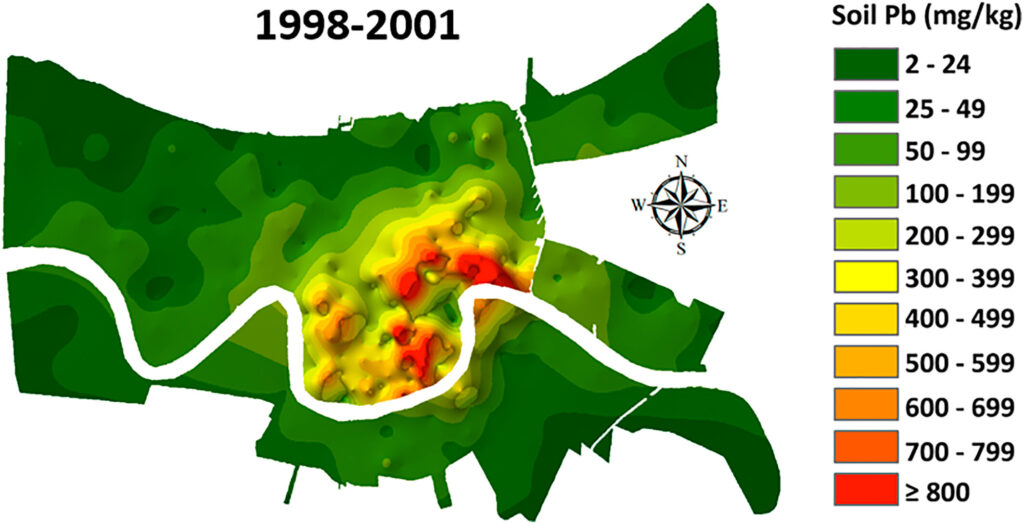
As in many traffic-congested cities, lead has built up in the soil of inner city New Orleans, La.
Credit: Laidlaw et al, GeoHealth https://doi.org/10.1029/2023GH000829
Featured research
Toxic lead in urban soils harms Black Americans
Urban populations, and particularly majority Black communities, have elevated concentrations of lead in their blood. Previous studies assume that today’s atmospheric lead concentrations are caused by current lead emissions; however, new research finds that urban soils contain lead from the 20th century that becomes airborne during dry seasons, harming vulnerable communities. [GeoHealth commentary]
Extreme heatwaves in China will occur every 8 years by 2100
In 2022, China experienced two record-breaking heatwaves that historically have a return period of tens of thousands of years. As temperatures rise, heatwaves of this intensity are projected to occur every 8.5 years on average by the end of the century. Researchers call for adaptation planners to consider new efforts to build social resilience to extreme heatwaves. [Geophysical Research Letters research].
Tree leaves point to valuable ores underground
Valuable ores are found in bedrock but are often covered by soil and vegetation. Plants growing on top of ores take in elements from soil, which contains broken-down bedrock. A new study demonstrates subtle changes in the light reflected from leaves can mark the presence of copper and molybdenum hidden below. [Radio Science research]
Effects of harvest, wildfires and grazing on carbon in US forests
U.S. forests have been recovering from past depletion since the early 20th century, but fire, harvest and grazing have contributed to continued forest loss. Tree harvest is the key driver in forest biomass loss, with wildfire also contributing. In total, U.S. forest recovery has led to a net increase in carbon stock density of nearly 40%. [Global Biogeochemical Cycles research]
Extreme precipitation storms will shrink in tropics but expand over arid regions
Rising temperatures will cause more concentrated and intense precipitation events in the tropics, and larger rainstorms in arid regions and central Europe. These short-duration storms can lead to severe flash flooding, creating a need for effective stormwater systems in urban areas. [Geophysical Research Letters research]
Beavers are remaking microbial ecosystems in the Arctic
As beavers expand their range northward into the Arctic tundra, changes in bacterial, archaeal and fungal communities appear to be following. The increasingly plant rich environments will likely capture more carbon, helping to mitigate carbon emissions from the environment, but in the long run, those gains may be offset by carbon released as microbes break down the vegetation. [JGR Biogeosciences research] [Eos research spotlight]